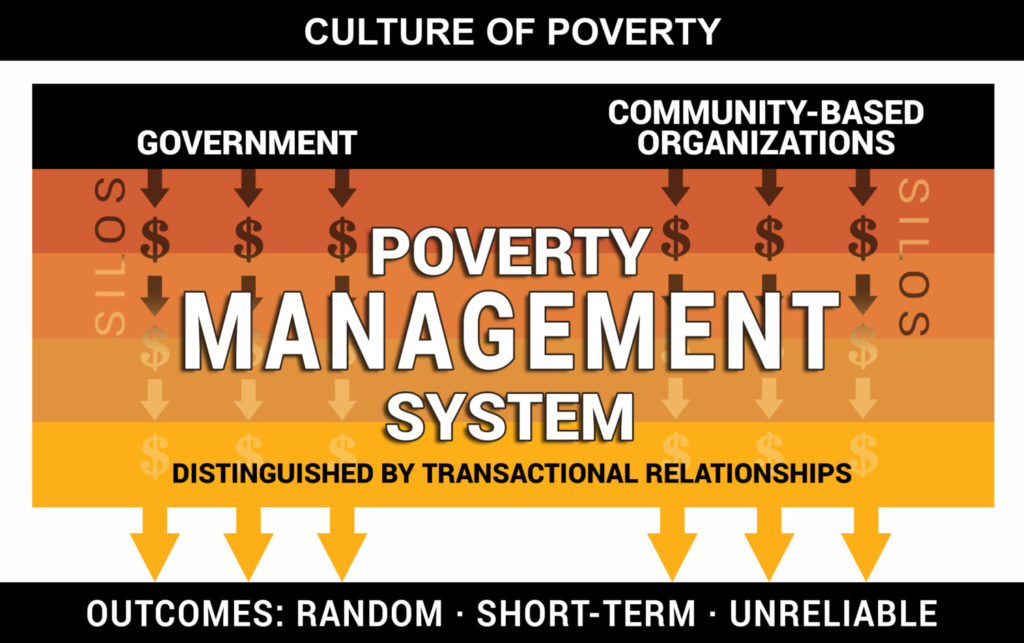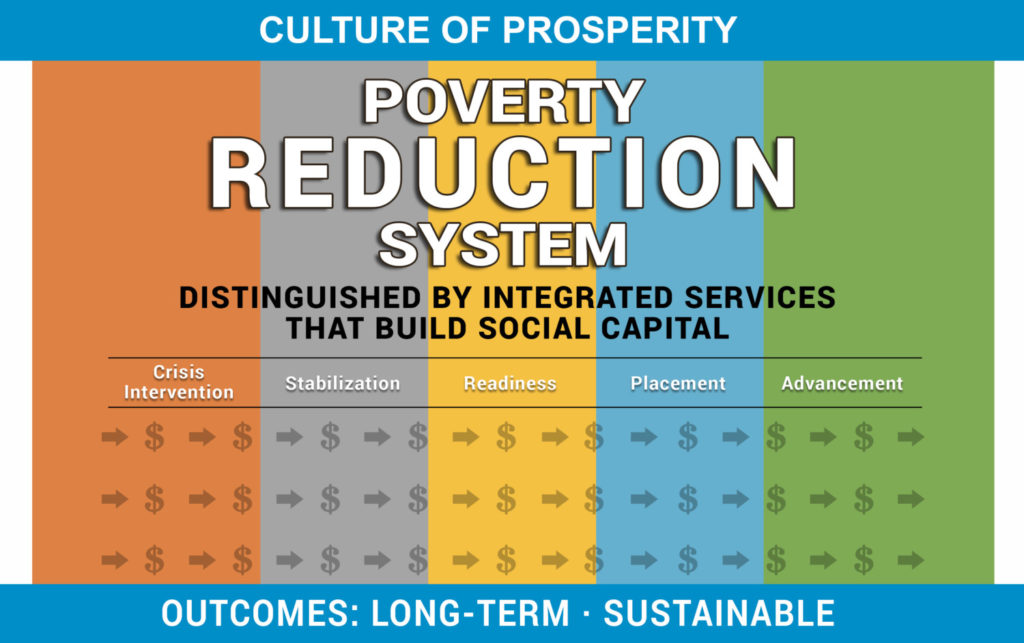
Our communities are organized to manage growing poverty. They are not organized to reduce poverty.
Every community spends a lot of money to help people manage crises . A mayor in a Utah community once told me that 90% of the 911 calls came from a relatively small but heavily concentrated area of people in poverty. Rather than investing in understanding the problems of poverty and solutions, we often just keep investing as much money as we can in reacting to it.
State and federal agencies spend billions on programs aimed to stabilize people in poverty: SNAP, HUD, TANF, Medicaid, childcare assistance, to name a few of the big ones. These programs are not organized to help people out of poverty. If they were, there would not be the problem known as the cliff effect in which people lose more assistance than the increase in pay that comes from getting a new job, taking more hours, and/or getting a raise. According to Ballotpedia.org, more than 40% of the residents in my home state of New Mexico receive Medicaid. Government spending is $18.2 billion in our state. Medicaid expenses are 30.3% of total government spending.
WOW. More than $5.5 billion for Medicaid in our relatively small population of just less than 2.1 million. How much would be saved by fixing the cliff effect? See our website for the most recent report regarding the cliff effect problem and what is being done about it. www.circlesusa.org
Employers in New Mexico and numerous other communities served by Circles USA are complaining they cannot find enough qualified workers to fill jobs and expand their businesses. The economy depends on having people who can consistently show up for work and get their jobs done.

Poverty reduction requires that teams of organizations work together to support a targeted number of households through the entire process of economic mobility noted in these five stages:
Poverty reduction requires that federal, state, and local funders recognize they are rewarding poverty management when they pay for units of services that do not connect the dots between these stages of the process. They inadvertently contribute to increasing poverty and reducing economic vitality. Managing poverty generates that “phantom workforce”—people who should work, want to work, could work, but won’t or can’t because of the cliff effect and the lack of comprehensive programs that support people through the entire process.
Poverty reduction systems will change our nation. We currently tolerate far too much poverty, given the immense resources, talent, and innovation we possess. The old model of paying for random units of services to manage poverty will one day give way to a more powerful approach.
In the meantime, Circles USA is cultivating a national community of transformational leaders who are building the new model that will truly address poverty. You can learn more about the poverty reduction labs in my book, Transformational Leadership, a Framework for Ending Poverty.
From the book: Enough Money, Meaning & Friends ~ By Scott C. Miller
To learn more about Scott Miller, please see his website here.

